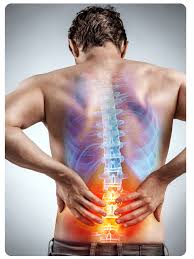In the realm of musculoskeletal discomfort, distinguishing between nerve pain and muscle pain is crucial for effective diagnosis and treatment. Nerve pain, also known as neuropathic pain, originates from damage or dysfunction in the nervous system, while muscle pain, often referred to as myofascial pain, stems from issues within the muscle tissue itself. Understanding the distinct symptoms, causes, and characteristics of these two types of pain is essential for healthcare professionals and individuals alike to provide targeted and personalized care. This article delves into the nuanced differences between pain and muscle pain, explores various diagnostic methods, and outlines treatment options and prevention strategies to help individuals navigate and alleviate their specific pain conditions.
1. Understanding Nerve Pain vs. Muscle Pain
Definition of Nerve Pain
Nerve pain, also known as neuropathic pain, originates from issues with the nervous system. It’s like your are throwing a noisy, painful party without an invitation.
Definition of Muscle Pain
Muscle pain, on the other hand, stems from problems in the muscle tissue itself. It’s like your muscles deciding to protest and make you feel like you just did a thousand squats when you only did ten.
2. Symptoms and Characteristics of Nerve Pain
Common Symptoms of Nerve Pain
Nerve pain often presents as a sharp, shooting, or burning sensation. It can feel like electricity running down your, reminding you that your body has a quirky way of signaling distress.
Characteristics of Nerve Pain Sensations
Nerve pain can be relentless and may come and go unpredictably, making you feel like you’re in a roller coaster ride no one signed up for.
3. Symptoms and Characteristics of Muscle Pain
Typical Symptoms of Muscle Pain
Muscle pain tends to be dull and achy, like a constant background noise you can’t escape. It may also feel tight, stiff, or sore as if your muscles have decided to turn into rigid party poopers.
Distinguishing Features of Muscle Pain
Muscle pain often worsens with movement or activity, unlike chornic pain which may have its agenda regardless of your actions. It’s like your muscles are throwing a tantrum, demanding rest and some TLC.
4. Causes of Nerve Pain and Muscle Pain
Underlying Causes of Nerve Pain
Nerve pain can be triggered by conditions like diabetes, chornic compression, or injuries. It’s like you are the drama queens of your body, overreacting to any slight inconvenience.
Potential Triggers for Muscle Pain
Muscle pain can arise from overuse, injury, tension, or conditions like fibromyalgia. It’s like your muscles are the workaholics who need a reminder to chill out and not take everything so seriously.
5. Diagnostic Methods for Distinguishing Nerve Pain from Muscle Pain
Physical Examination and Clinical Assessment
When it comes to differentiating pain from muscle pain, your doctor may start with a thorough physical examination and clinical assessment. They’ll ask you questions about your symptoms, perform strength and reflex tests, and try to pinpoint the source of your pain.
Imaging and Laboratory Tests
In some cases, imaging studies like MRI or CT scans, as well as conduction studies or electromyography (EMG), may be used to help diagnose chronic-related issues. Blood tests can also help rule out certain conditions that may be causing muscle pain.
6. Treatment Options for Nerve Pain
Medications for Nerve Pain Relief
When it comes to treating chronic pain, medications such as anti-inflammatories, antidepressants, or anticonvulsants may be prescribed to help alleviate symptoms and target the underlying cause.
Physical Therapy and Rehabilitation
Physical therapy can play a crucial role in managing chronic pain by improving strength, flexibility, and overall function. Rehabilitation programs tailored to your specific needs can help you regain mobility and reduce pain.
7. Treatment Options for Muscle Pain
RICE Method for Muscle Pain Management
For muscle pain, the good ol’ RICE method (Rest, Ice, Compression, Elevation) can work wonders in reducing inflammation and soothing achy muscles. It’s a classic for a reason!
Massage Therapy and Stretching Exercises
Massage therapy and gentle stretching exercises can help relax tense muscles and improve circulation, promoting faster recovery and reducing the likelihood of future muscle pain.
8. Prevention Strategies for Nerve and Muscle Pain
Healthy Habits to Prevent Nerve and Muscle Pain
Maintaining a healthy lifestyle, including regular exercise, a balanced diet, and adequate rest, can go a long way in preventing both chronic and muscle pain. Take care of your body, and it will take care of you!
Ergonomic Tips for Avoiding Nerve and Muscle Strain
Whether at work or during physical activities, paying attention to proper ergonomics is crucial in preventing chornic and muscle strain. Make sure your workspace is set up ergonomically, and always practice good form during exercise to avoid unnecessary pain and injury.
Conclusion
By recognizing the unique traits of pain and muscle pain, individuals can better advocate for their health and well-being. Whether seeking medical intervention or incorporating preventive measures into their daily routines, understanding how to differentiate these types of pain empowers individuals to address their discomfort effectively. With the right knowledge and personalized approach, individuals can take proactive steps toward managing and alleviating muscle pain, ultimately enhancing their quality of life and overall health.
 Diverse Perspectives: Insights & Stories Exploring Ideas, Sharing Knowledge
Diverse Perspectives: Insights & Stories Exploring Ideas, Sharing Knowledge





